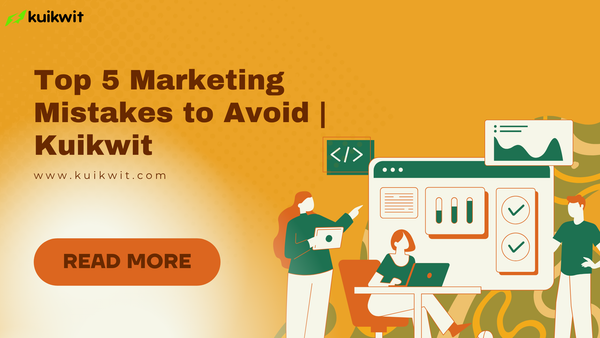Building Customer Trust with Omnichannel Messaging | Proven Strategies
Learn how to build customer trust messaging with omnichannel strategies. Discover simple tips to improve customer experience, boost loyalty, and grow your business.

In today’s fast-moving digital world, customers expect more than just buying products. They expect to be heard, understood, and helped no matter how they reach out. That’s why omnichannel messaging is crucial. When done right, it helps businesses build strong trust, deepen customer loyalty, and increase sales.
This article will show you how to build customer trust messaging using omnichannel strategies. We’ll explain what omnichannel messaging is, share real stats, offer practical tips, and show what your business can do to stand out.
What Is Omnichannel Messaging?
“Omnichannel messaging” means letting customers talk to your business across many channels like email, live chat, SMS, WhatsApp, social media messaging and having those channels work together smoothly.
Instead of each channel being separate (so the customer has to repeat themselves or switch apps), an omnichannel approach keeps everything connected. The customer’s history, preferences, and issues follow them across channels. This creates a smoother, more trustworthy experience. It’s not just being everywhere; it’s being consistent, responsive, and helpful everywhere.
Why Omnichannel Messaging Matters for Trust
Here are some key data points that show why using omnichannel messaging helps build trust:
- Companies with robust omnichannel customer engagement retain about 89% of their customers.
- Omnichannel marketing campaigns have around 38.96% customer engagement rate, compared to ~5.4% for single-channel efforts. dgngate.com
- 56% of customers have to repeat themselves because of disconnected support channels. Disjointed communication hurts trust. Plivo
- Businesses that deliver seamless omnichannel experiences see higher loyalty. Around 65% of customers say seamless omnichannel experience is crucial for loyalty. WifiTalents
- 84% of organizations delivering superior customer experience (often via omnichannel methods) report increased revenue. WifiTalents
These numbers show that trust (and business success) is tightly linked to how well a company manages communication across channels.
How to Build Customer Trust Messaging Using Omnichannel
Here are actionable ways to use omnichannel messaging so that customers begin to trust your brand more:
Ensure Message Consistency Across Channels
- Use the same tone, style, and kind of helpful content everywhere (email, chat, SMS, social media).
- Maintain uniform branding (logos, signatures) so customers recognize you instantly, no matter where they are.
- When customers switch from one channel to another, don’t make them repeat their issue.
Be Responsive and Timely
o Customers expect quick replies. One “delay” can break trust.
o Use automation where possible (e.g. auto-replies to acknowledge messages), but always aim to follow up personally.
o Speed of response builds the perception that your business values the customer.
Personalize Interactions
o Use customer data (purchase history, preferences, language) to tailor messages. “Hi Sarah, I saw you ordered X…” feels much more trustworthy than generic greetings.
o Segment your audience so messages are relevant.
Be Transparent & Honest
o If there’s an issue (product delay, service disruption), communicate openly. Tell them what’s wrong and what you’re doing.
o Share your policies clearly (returns, refunds, data privacy). When customers know what to expect, trust grows.
Secure Customer Data & Make It Clear
o Use secure messaging channels, encryption, two-factor authentication (2FA). Customers care a lot about data privacy.
o Let them know you protect their info. The mere statement about security builds trust.
Offer Proactive Support
o Don’t wait for customers to reach out. Send helpful reminders, order updates, suggestions.
o Use omnichannel messaging to anticipate needs. For example, notify via SMS or WhatsApp when a delivery is late.
Use Feedback & Act on It
o After a purchase or service, ask for feedback. Show that you listen.
o Display testimonials and reviews. People trust other people. Social proof matters.
o If someone complains, solve the problem and follow up turn a bad experience into trust.
Train Your Team to Be Empathetic
o Tone matters. Use friendly, real human language. Avoid jargon.
o Empathy, apology when needed, and fairness go a long way.
Common Mistakes to Avoid
To make sure your efforts at building customer trust messaging actually work, avoid these pitfalls:
- Channel silos: If your chat, email, and SMS teams don’t share info, customers will feel frustrated.
- Over-automation: Auto-replies are good, but only if they don’t feel robotic.
- Ignoring negative feedback: Not responding to complaints can harm trust more than making the mistake.
- Inconsistent policies or promises: Saying one thing on social media and doing another in private messages breaks trust quickly.
Conclusion
Building customer trust messaging via omnichannel strategies isn’t just a “nice-to-have” it’s essential. With consistency, responsiveness, personalization, transparency, secure practices, and empathy, you can turn every message into an opportunity to prove you're reliable and care. Customers won’t just buy once they’ll stay, recommend you, and become loyal advocates.
Are you ready to transform your customer messaging into trust-building conversations?
What are you waiting for? Start your free trial now on Kuikwit!




